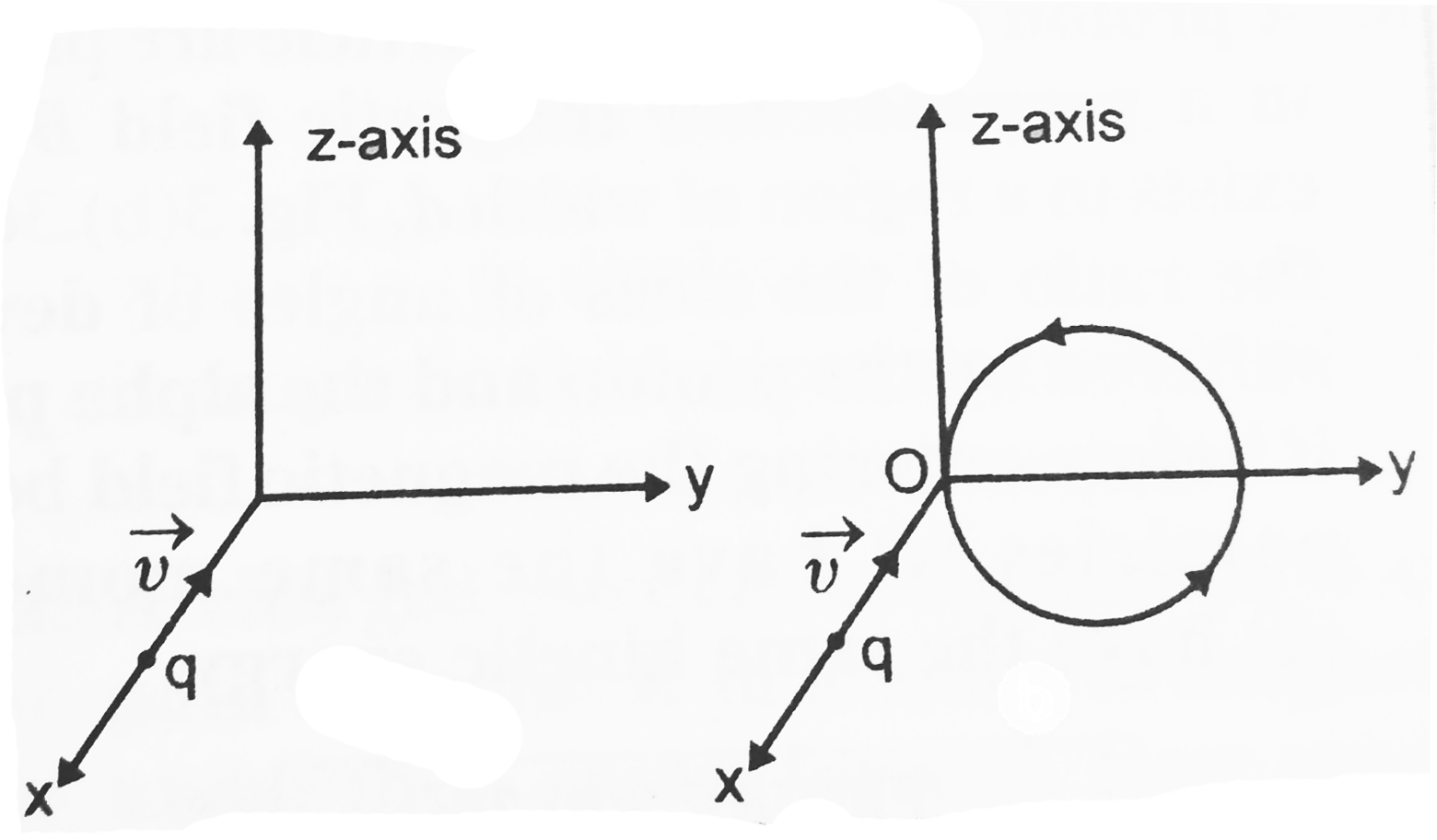Four charges are rigidly fixed along the Y-axis as shown. A positive charge approches the system along the Xaxis with initial speed just enough to cross the origin. Then its total energy at the origin is

zero
positive
negative
data insufficient
The correct Answer is:B

There exists a point P on the x-axis (other than the origin), where not electric field is zero. Once the charge Q reaches point P, attractive forces of the two −ve charge will dominate and automatically cause the charge Q to cross the origin.
Now if Q is projected with just enough velocity to reach P, its K.E. at P is zero,
But while being attracted towards origin it acquires K.E. and hance its net energy at the origin is positive.
(P.E. at origin = zero).
Topper's Solved these Questions
- ELECTRIC POTENTIAL & CAPACITANCEBOOK - A2ZCHAPTER - ELECTRIC POTENTIAL & CAPACITANCEEXERCISE - Section B - Assertion Reasoning
17 Videos
- ELECTRIC POTENTIAL & CAPACITANCEBOOK - A2ZCHAPTER - ELECTRIC POTENTIAL & CAPACITANCEEXERCISE - AIPMTNEET Questions
38 Videos
- ELECTRIC POTENTIAL & CAPACITANCEBOOK - A2ZCHAPTER - ELECTRIC POTENTIAL & CAPACITANCEEXERCISE - Capacitor Circuits
52 Videos
- ELECTRIC CHARGE, FIELD & FLUXBOOK - A2ZCHAPTER - ELECTRIC CHARGE, FIELD & FLUXEXERCISE - Section D - Chapter End Test
29 Videos
- ELECTROMAGNETIC INDUCTIONBOOK - A2ZCHAPTER - ELECTROMAGNETIC INDUCTIONEXERCISE - Section D - Chapter End Test
30 Videos
Similar Questions
Two identical negative charges are fixed on X axis at equal distances from the origin (O). A particle having positive charge starts at a large distance from O, moves along the Y axis, passes through the origin and moves far away from O in the positive Y direction. Describe qualitatively how its acceleration charges as it moves. Draw a rough graph showing the variation of acceleration (a) vs position of the particle (y). Take the acceleration of the particle to be positive in + Y direction.
View SolutionA charge q moving along the X-axis with a velocity →v is subjected to a uniform magnetic field B acting along the Z-axis as it crosses the origin O. Figure.

(i) Trace its trajectory . (ii) Does the charge gain kinetic energy as it enters the magnetic field? Justify yous answer.
View Solution
Knowledge Check
Consider two positive point charges, each of magnitude q, placed on the y-axis at the points (0, a) and (0, -a). A positively charged particle of charge q' and mass m is displaced slightly from the origin in the direction of the positive x-axis.
At the origin, charge q' will be inAstable equilibriumBunstable equilibriumCneutral equilibriumDcannot determineConsider two positive point charges, each of magnitude q, placed on the y-axis at the points (0, a) and (0, -a). A positively charged particle of charge q' and mass m is displaced slightly from the origin in the direction of the positive x-axis.
Speed of charge q' at infinity isA√qq'πε0mB√q'πε0amC√qq'ε0amD√qq'πε0amTwo equal negative charges are fixed at points and on y-axis. A positive charge Q is released from rest at the point on the x-axis. The charge Q will:
Aexecute simple harmonic motion about the originBmove to the origin and remain at restCmove to infinityDsame as at point 25 cm aways form the surface
A charge 'q' moving along the X-axis with a velociyt →v (fig) is subjected to a uniform magnetic field →B acting along the Z-axis as it crosses the origin O.
(i) Trace its trajectory.
(ii) Does the charge gain kinetic energy as it enters the magnetic field? Justify your answer.
View SolutionTwo identical positive charges are fixed on the y-axis, at equal distances from the origin O. A particle with a negative charges starts on the x-axis at a large distance from O. moves along the x-axis passes through O, and moves far away from O on the other side. Its acceleration a is taken as positive along its direction of motion. Plot acceleration a of the particle against its x-coordinate.
View SolutionThree particles are situated on a light and rigid rod placed along Y-axis. If the system rotates about X-axis, the M.I. of the system is :

View SolutionA charge +q is located at the origin, while an identical charge is located on the x axis at x = +0.50 m. A third charge of +2 q is located on the x axis at such a place that the net electrostatic force on the charge at the origin doubles, its direction remaining unchanged. Where should the third charge be located ?
View SolutionThree charges are placed along x-axis at x = - a x = 0 and x = a as shown in the figure. The potential energy of the system is

View Solution
